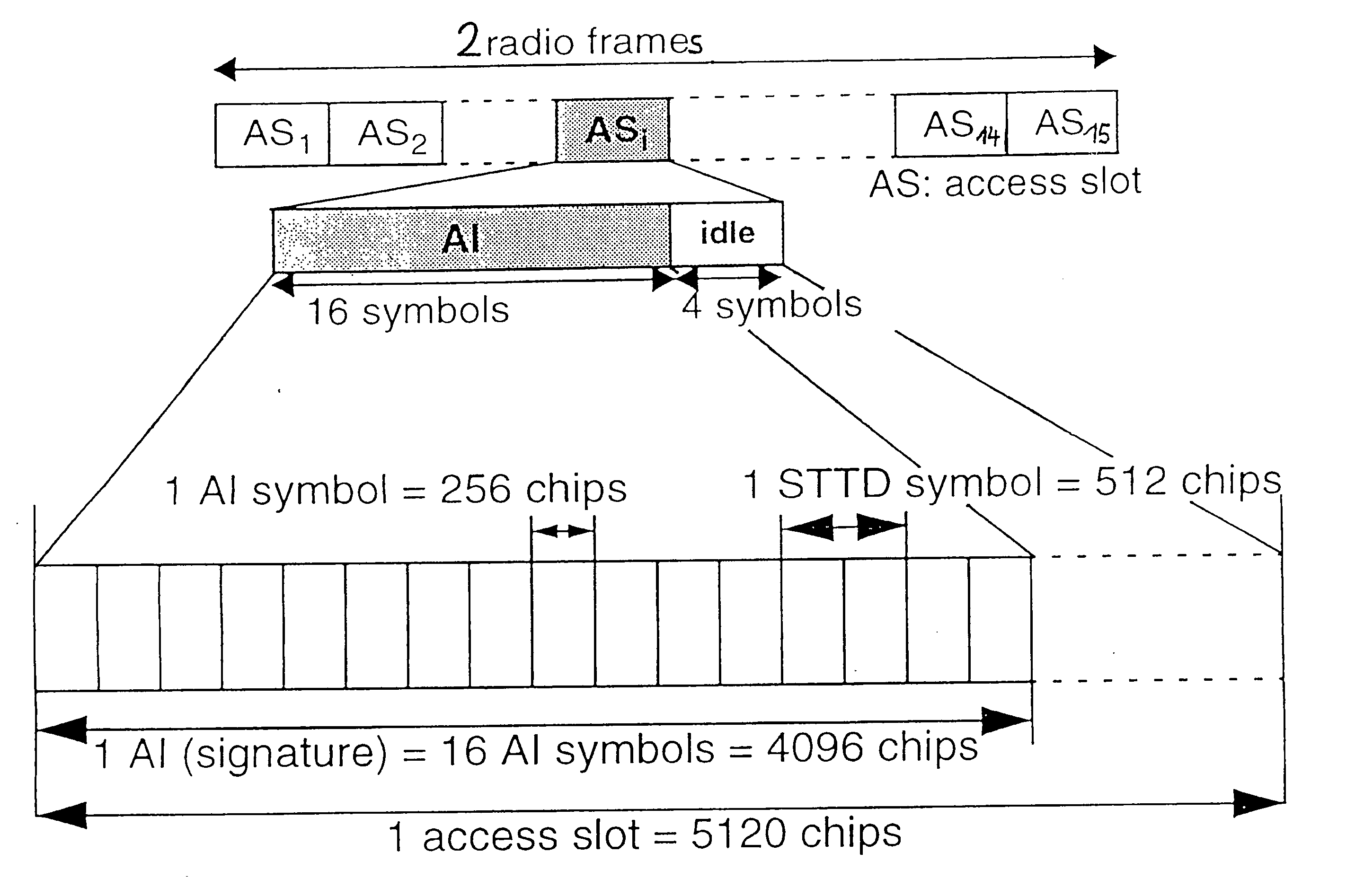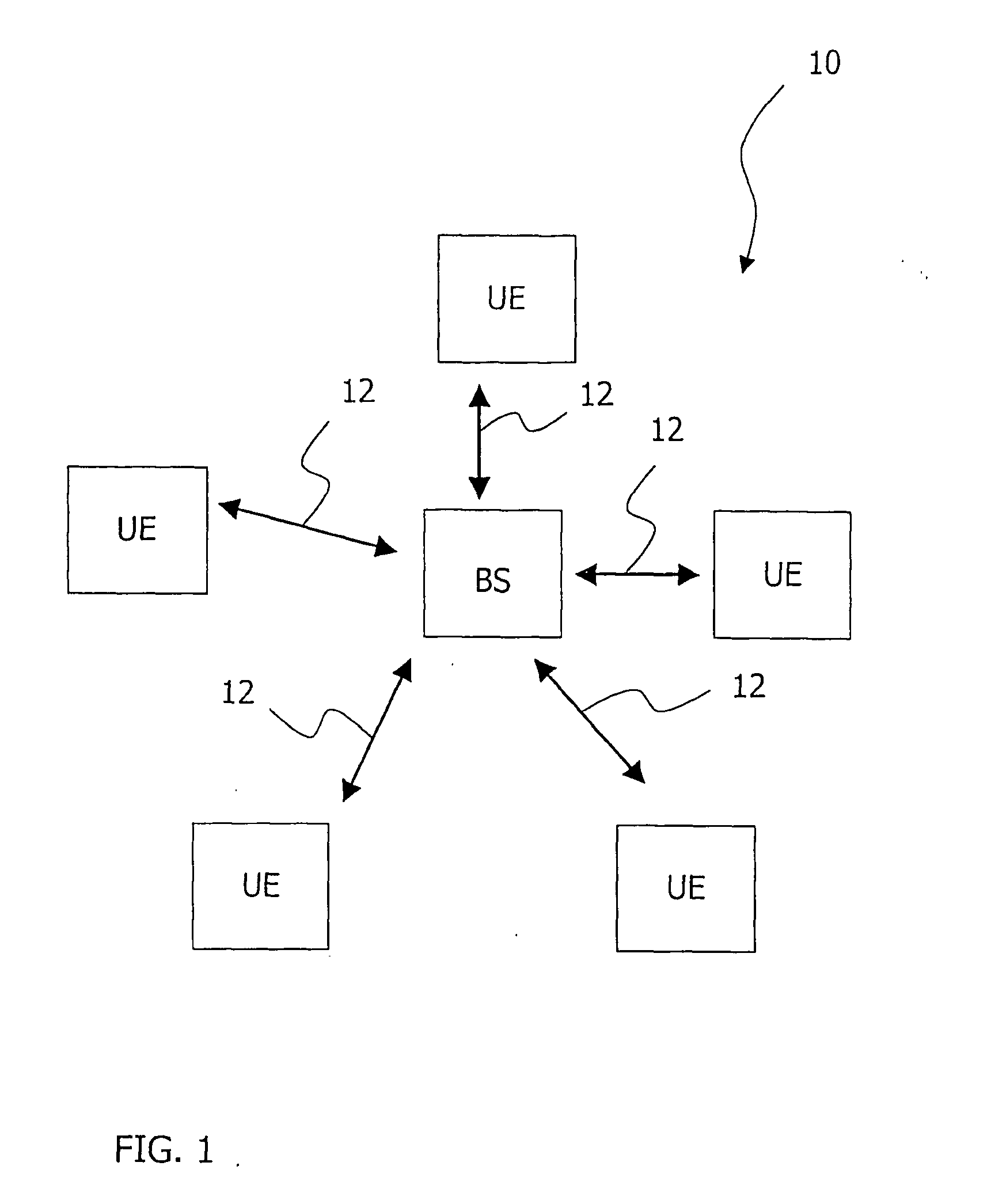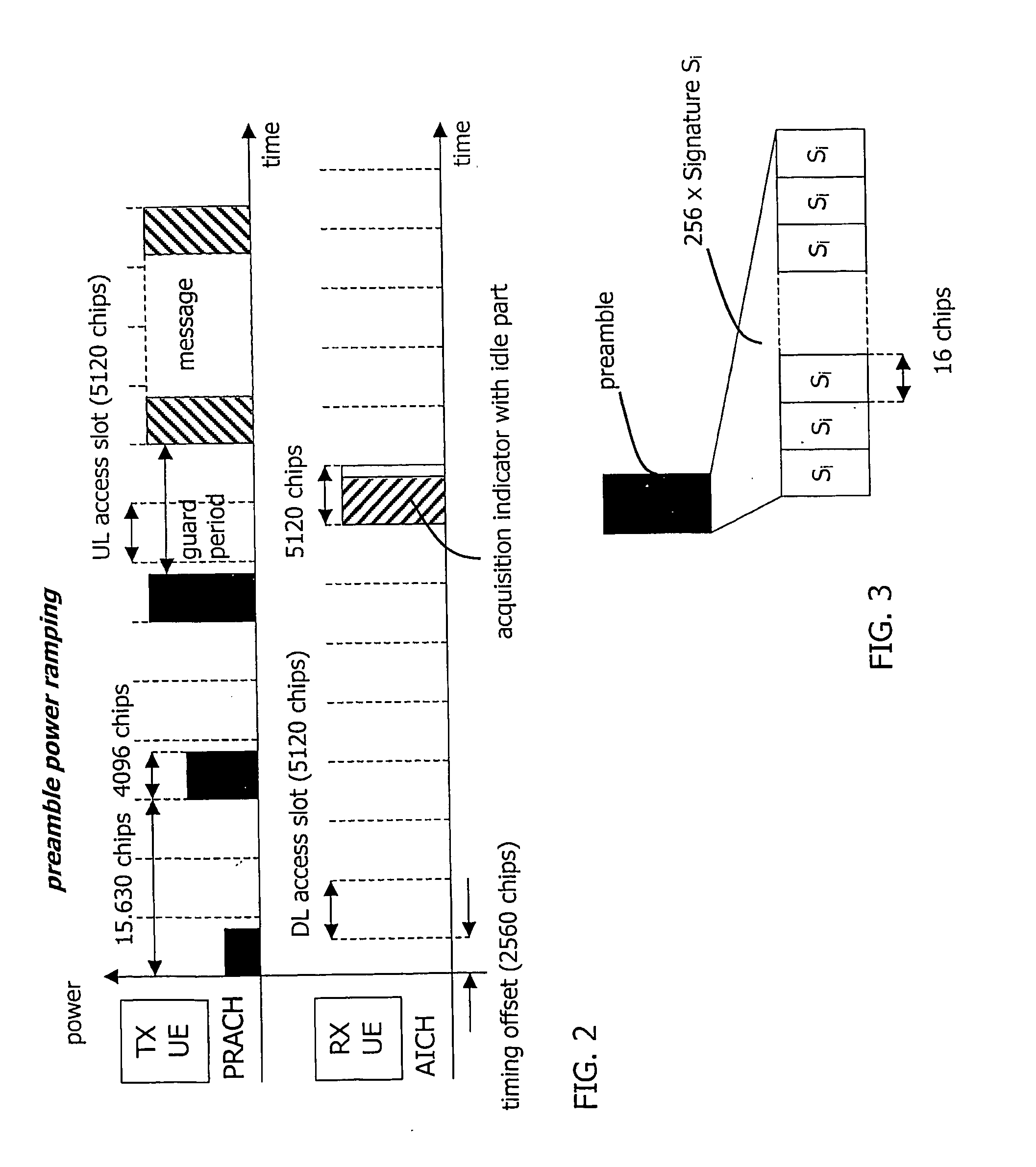Evaluating orthogonal codes transmitted in a wireless communications network
a wireless communication network and orthogonal code technology, applied in the field of evaluation of signals, can solve the problems of affecting the quality of the code, affecting the reliability of the code evaluation process, and a certain extent of the orthogonality of the received and demodulated code, so as to facilitate any decision mechanism involved, improve the reliability of the code evaluation process, and increase the orthogonality of the cod
- Summary
- Abstract
- Description
- Claims
- Application Information
AI Technical Summary
Benefits of technology
Problems solved by technology
Method used
Image
Examples
Embodiment Construction
[0032] In the following the invention will exemplarily be set forth with respect to a wireless communications system according to the 3GPP specification. In particular, the invention will be described in context with the RA scheme defined in section 6 of the 3GPP document TS 25.214, Version 4.4.0 (2002-03) titled “Technical Specification Group Radio Access Network; Physical Layer Procedures (FDD); Release 4”. It should be noted, however, that the invention could also be practiced in any other wireless communications system like CDMA 2000.
[0033] Furthermore, although the invention is hereinafter described in context with network components in the form of user equipments (UEs) requesting access to a common network component configured as a base station (BS), the invention is not limited to such specific network components. In particular, the invention is not limited to the “random access signaling” functionality described hereinafter. Other signaling functionalities apart from access...
PUM
 Login to View More
Login to View More Abstract
Description
Claims
Application Information
 Login to View More
Login to View More - R&D
- Intellectual Property
- Life Sciences
- Materials
- Tech Scout
- Unparalleled Data Quality
- Higher Quality Content
- 60% Fewer Hallucinations
Browse by: Latest US Patents, China's latest patents, Technical Efficacy Thesaurus, Application Domain, Technology Topic, Popular Technical Reports.
© 2025 PatSnap. All rights reserved.Legal|Privacy policy|Modern Slavery Act Transparency Statement|Sitemap|About US| Contact US: help@patsnap.com



